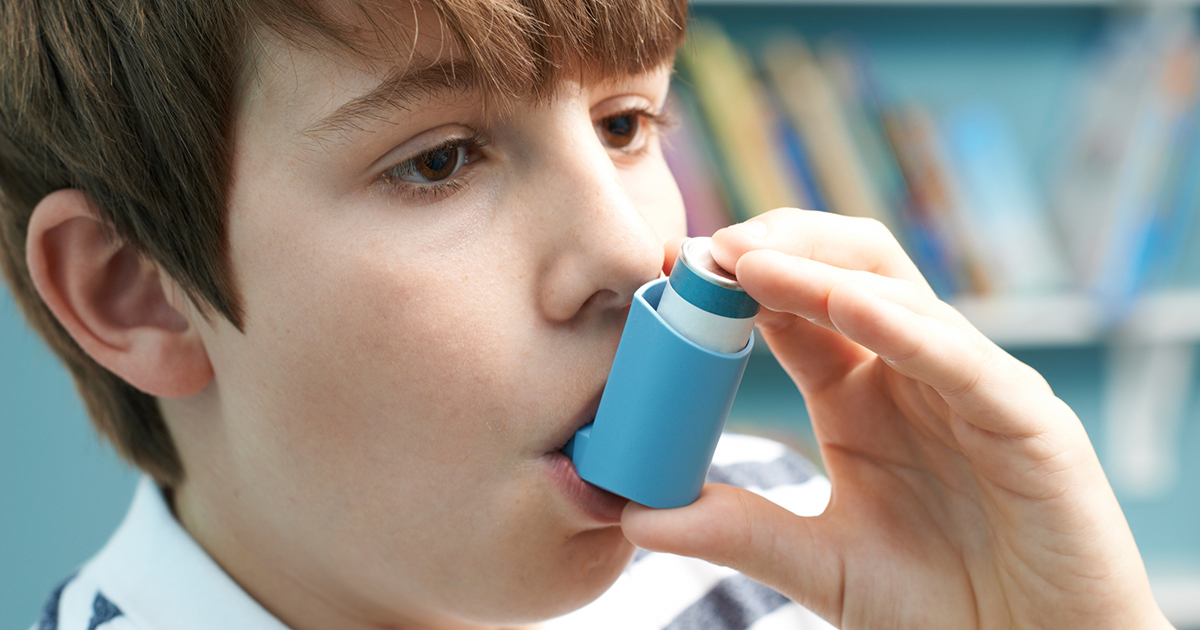Guide To The Different Types Of Asthma
Asthma is a term used to describe a long-term lung condition that causes the airways inside of an individual's lungs to become narrowed, inflamed, and swollen. Characteristic symptoms of asthma include chest tightness, coughing, wheezing, and shortness of breath. A patient can experience symptoms several times each day, or once every few months in milder cases. Individuals affected by asthma experience episodic attacks where their symptoms become worse. Asthma attacks can be triggered by several things, with the most common being cold air, exercise, allergies, and infections. Many cases of asthma begin in childhood, but individuals of any age can develop asthma. Some cases of asthma are idiopathic, while others are caused by an abnormal immune system response. Asthma treatment focuses on decreasing symptoms and preventing asthma attacks.
There are several different types of asthma. Get to know them now.
Exercise-Induced Asthma

The type of asthma frequently triggered by strenuous physical activity is referred to as exercise-induced asthma. An individual affected by exercise-induced asthma may start to have symptoms during or shortly after physical activity. Without proper treatment, a patient can experience symptoms such as wheezing, chest tightness, pain, poor athletic performance, coughing, activity avoidance, fatigue during exercise, and shortness of breath for sixty minutes or longer. These symptoms are the result of the bronchoconstriction that occurs in affected individuals. The exact mechanism of what causes this bronchoconstriction is unclear, but excess mucus production and inflammation are known to play key roles in the process.
Untreated exercise-induced asthma can cause an affected individual to perform poorly in activities they would usually enjoy, have a lack of beneficial physical activity, and experience life-threatening breathing difficulties. Diagnosis of exercise-induced asthma is made with a physical examination and spirometry tests. Treatment may include the use of pre-exercise medications and long-term control medications.
Read more about the types of asthma out there now.
Allergic Asthma

The most prevalent form of asthma that occurs among the general population is called allergic asthma. An individual affected by allergic asthma has an immune system that inappropriately responds to harmless stimuli, such as pet dander and pollen. The patient's immune system produces molecules referred to as IgE antibodies in response to the harmless substance. IgE antibodies promote a cascade of reactions that cause the patient to experience a runny nose, swelling, sneezing, and airway muscle contraction. The affected individual's airways flood with mucus and experience inflammation. The symptoms that occur in an allergic asthma patient once an allergy cascade has been activated include coughing, shortness of breath, chest tightening, wheezing, and fast breathing. Common substances known to trigger symptoms of allergic asthma include grass pollen, tree pollen, ragweed pollen, hair dander, skin dander, feather dander, cockroaches, mold, and dust mites. Treatment of allergic asthma includes the use of short and long-acting medications to control allergies, reduce inflammation, and relax the airway muscles.
Get more details on the different types of asthma now.
Nonallergic Asthma

Nonallergic asthma refers to a type of asthma where an affected individual's immune response is not involved in its pathogenesis and triggers. The only antibodies involved in nonallergic asthma are localized IgE antibodies in the patient's airways. The symptoms in nonallergic asthma are not triggered by an external allergen that activates the immune system, but an external irritant instead. Such triggers include everyday irritants that occur outside of the body, including tobacco smoke, cold air, perfumes, dry air, wood smoke, fireplace smoke, exposure to certain drugs, air pollution, strong chemical odors, and scented products. Irritants that occur inside of an affected individual's body that can trigger symptoms include excessive laughing or crying, mental or emotional stress, anxiety, viral or bacterial infection, fluctuations in hormones, and acid reflux. Nonallergic asthma is diagnosed by ruling out other conditions and types of asthma. Nonallergic asthma patients have a negative result on their aeroallergen spirometry and skin allergy tests.
Discover additional types of asthma now.
Occupational Asthma

A form of asthma that develops in an individual as a result of the inhalation of certain substances when they are on the job is referred to as occupational asthma. While symptoms of occupational asthma are similar to those in other forms, certain factors can help distinguish it. These factors include an increase in symptom severity as the workweek progresses, a decrease in symptoms when on weekends and vacations, and symptoms that worsen or recur upon returning to work. Occupational asthma can only develop after an initial extended period of routine exposure to the triggering substance. The greater the duration of when an individual is exposed to the triggering substance, the longer they will experience symptoms when they cease exposure completely.
Occupational asthma can be caused by animal proteins found in hair, fur, body wastes, dander, scales, and saliva. Chemicals used to produce insulation, upholstery, packaging materials, foam mattresses, paints, adhesives, soldering resin, varnishes, and laminates are also causes of occupational asthma. Other substances implicated in occupational asthma include flour conditioner enzymes, platinum, nickel sulfate, chromium, rubber latex components, cereal proteins, flax proteins, rye, papain, cotton proteins, hemp, chlorine gas, smoke, and sulfur dioxide.
Keep reading to learn more about the different forms of asthma out there now.
Adult-Onset Asthma

The type of asthma that develops in individuals in their adult years who have not been previously diagnosed with any form of asthma is referred to as adult-onset asthma. A patient's asthma is considered to be adult-onset asthma if they have reached their second decade of life. Some individuals are at a higher risk of developing this type of asthma, such as pregnant women, women going through menopause, women who have used estrogen after menopause for an extended period, individuals with recent respiratory illness, those with allergies, gastroesophageal reflux disease patients, and individuals frequently exposed to external or occupational irritants.
Adult-onset asthma is different from childhood forms of asthma because the adult lungs have a different capacity and some functional differences when compared to the lungs of a child. Adult-onset asthma is diagnosed using a lung function test, methacholine challenge, and chest x-rays. Treatment of adult-onset asthma may include a combination of corticosteroids, short-acting bronchodilators, long-acting bronchodilators, and certain lifestyle changes.